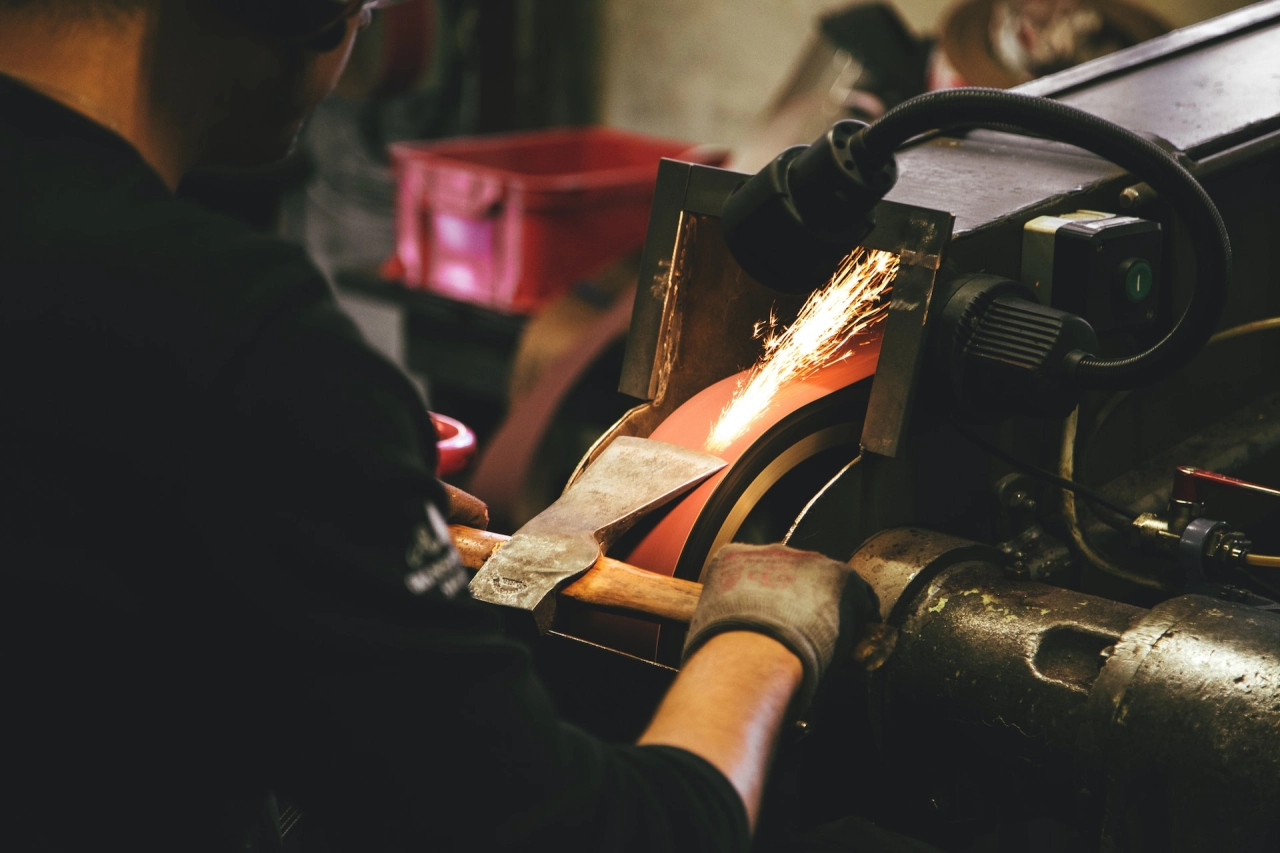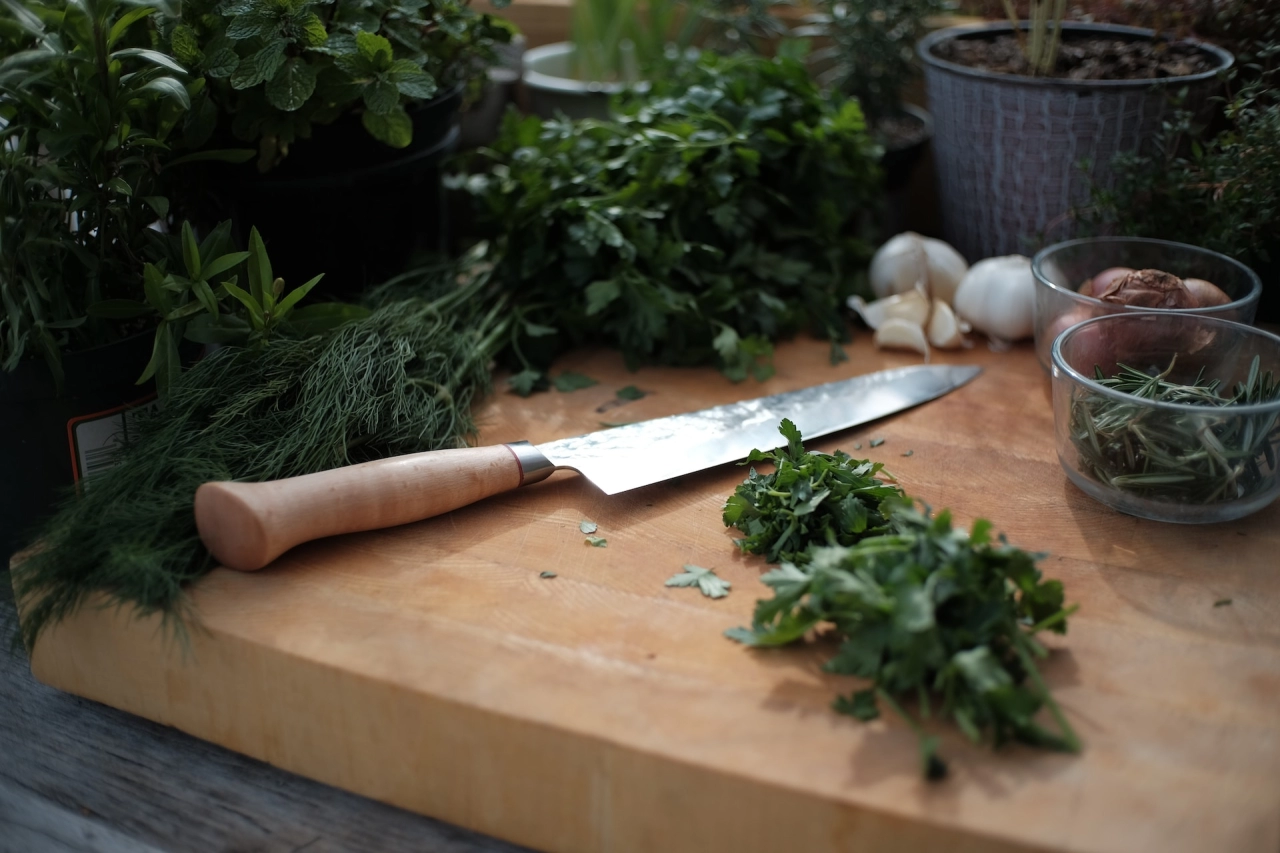By Super Admin - 9 October 2023
How to Sharpen a Hunting Knife: A Comprehensive Guide
Learn the art of sharpening a hunting knife like a pro with our expert tips and comprehensive guide. Keep your blade in top-notch condition.

When it comes to hunting, having a sharp knife is not just a matter of convenience; it's a matter of safety and success. A dull hunting knife can lead to accidents in the field and make field dressing and processing game a frustrating task. To ensure you're always ready for the hunt, it's essential to know how to sharpen a hunting knife effectively. In this comprehensive guide, we'll walk you through the steps to maintain a razor-sharp edge on your hunting knife.
A Sharp Knife: A Hunter's Best Friend
Picture this: You're in the woods, tracking your prey. Suddenly, you need to cut a rope or skin your game. Your heart races, and you reach for your hunting knife. But wait, is it sharp enough? A sharp hunting knife can be the difference between a successful hunt and a frustrating experience. It's not just a tool; it's your best friend in the wild.

Precision and Safety
A sharp knife offers precision in every cut, reducing the chances of accidents. When your knife is dull, you may need to exert more force, increasing the risk of slips and injuries. Stay safe; keep your knife sharp!
Benefits of Knowing How to Sharpen It Yourself
Self-Reliance in the Wilderness
Imagine being miles away from civilization, and your knife loses its edge. Panic sets in. But not for you, because you know how to sharpen it yourself. Self-reliance in the wilderness is invaluable.
Cost-Effective Solution
Sending your knife for professional sharpening can be expensive. Knowing how to sharpen it yourself saves you money in the long run. Invest in the skill, and it pays off.
Overview of the Sharpening Process
The Art of Blade Revival
Knife sharpening is more than just a task; it's an art. It's about bringing life back to a dull blade, restoring its glory, and ensuring it performs at its best. In the following sections, we will delve deeper into this art, step by step.
Understanding Your Hunting Knife
Types of Hunting Knives
Hunting knives come in various shapes and sizes, each designed for specific tasks. From the drop-point to the clip-point, understanding the types ensures you pick the right tool for the job.
Blade Materials and Their Characteristics
Different knives use different materials for their blades. Whether it's stainless steel or carbon steel, knowing the characteristics of these materials helps you maintain your knife effectively.
Signs That Your Knife Needs Sharpening
A dull knife displays telltale signs: reduced cutting efficiency, tearing rather than slicing, and frustration. Learn to recognize these signs, and you'll know when it's time to sharpen.

Essential Tools and Materials
Different Sharpening Methods
There's no one-size-fits-all approach to sharpening. We'll explore various methods, from traditional whetstones to modern sharpening systems, giving you options to choose what works best for you.
Recommended Sharpening Tools
Not all sharpening tools are created equal. Discover the tools that professionals swear by, ensuring you achieve the sharpest edge.
Safety Precautions
Safety should always come first. Learn the essential safety precautions to prevent accidents during the sharpening process. Your fingers will thank you.
Step-by-Step Guide to Sharpening a Hunting Knife
Preparing Your Workspace
Before you start sharpening, setting up the right workspace is crucial. We'll guide you through creating a safe and efficient environment.
Cleaning the Knife
A clean knife is easier to sharpen. We'll show you how to prepare your blade for the sharpening process, ensuring optimal results.
Choosing the Right Angle
The angle at which you sharpen your knife matters. Find out the ideal angle for your knife and sharpen it like a pro.
Selecting the Appropriate Sharpening Method
Different knives may require different sharpening methods. We'll help you choose the right technique for your specific knife.
Executing the Sharpening Process
Now comes the heart of the matter. We'll break down the sharpening process into three main methods:
Using a Whetstone
The classic method. Learn the art of honing your blade with a whetstone, achieving razor-sharp perfection.
Using a Sharpening Rod
Perfect for those on the go. Discover how a sharpening rod can quickly restore your knife's edge.
Using a Sharpening System
Modern technology meets tradition. Explore sharpening systems that simplify the process while delivering exceptional results.
Testing the Sharpness
How do you know if your knife is sharp enough? We'll share tips on testing the sharpness, so you can confidently head into the wilderness.
Honing the Blade
Honing is the final touch to ensure your knife's edge stays sharp. Learn this last step in achieving the perfect edge.
Maintaining Your Knife
Proper Cleaning and Storage
Keeping your knife clean and stored properly prolongs its life. We'll guide you on maintaining your prized possession.
Regular Maintenance Routine
Prevention is better than cure. Establish a regular maintenance routine to keep your knife sharp and ready for action.
Signs of Wear and When to Re-sharpen
Sometimes, wear and tear are inevitable. Learn how to spot signs of wear and when it's time to re-sharpen your knife for peak performance.
Troubleshooting Common Issues
Knife Not Getting Sharp Enough
What if your knife still isn't sharp? We'll troubleshoot common issues and provide solutions to ensure your knife gets the edge it deserves.
Uneven Sharpening
Uneven sharpening can lead to an imbalanced blade. We'll help you troubleshoot and correct this common problem.
Blade Damage and When to Seek Professional Help
Accidents happen. If your knife sustains damage beyond repair, we'll guide you on when it's time to seek professional help.
Additional Tips and Techniques
Sharpening Serrated Blades
Serrated blades require specialized care. Discover the secrets to keeping those serrations sharp and efficient.
Sharpening Folding Knives
Folding knives have unique challenges. Learn how to sharpen them effectively and safely.
DIY Knife Sharpening Hacks
Sometimes, you need to get creative. We'll share some DIY knife sharpening hacks for those times when you're in a pinch.
Conclusion
In conclusion, your hunting knife is more than just a tool; it's a companion on your outdoor adventures. Knowing how to sharpen it yourself empowers you with self-reliance and saves you money. By following our comprehensive guide, you've gained the knowledge and skills to keep your hunting knife razor-sharp, ensuring a safe and successful hunt every time.
FAQs
Q1: How often should I sharpen my hunting knife?
A1: The frequency of sharpening depends on usage, but a general rule is to sharpen it after every hunting trip or when you notice reduced cutting efficiency.
Q2: Can I use household items for sharpening in emergencies?
A2: While it's not ideal, you can use the bottom of a ceramic mug or the unglazed edge of a porcelain plate in emergencies. It's not a long-term solution, though.
Q3: What's the best angle to sharpen a hunting knife?
A3: The ideal angle varies based on the knife, but a common range is between 15 to 20 degrees for most hunting knives.
Q4: How can I prevent rust on my hunting knife?
A4: To prevent rust, clean and dry your knife thoroughly after each use, and consider using a rust-preventing oil or silicone cloth for storage.
Q5: Can I sharpen a damaged blade myself?
A5: Minor damage can often be fixed with sharpening, but if the blade is severely damaged or chipped, it's best to seek professional help.
You might also like

10 Ways to Carry a Fixed Blade Knife
By Super Admin - 20 October 2023
Discover expert tips for safely and stylishly carrying a fixed-blade knife with our top 10 methods. Whether you're an outdoor enthusiast or a daily carrier, find the perfect way to keep your trusted tool by your side.

Best Throwing Knives for Survival in 2023
By Super Admin - 6 October 2023
Discover the top throwing knives for survival in 2023 - expert reviews and buying guide. Equip yourself for ultimate survival!

Best 308 Hunting Rifle under $1000
By Super Admin - 3 October 2023
Discover the best .308 hunting rifles under $1000 in our comprehensive guide. Find your ideal firearm for the hunt today!

How to Darken Leather Boots
By Super Admin - 26 September 2023
Discover the art of darkening leather boots with our step-by-step guide. Elevate your style effortlessly. Get started now!
Baramdat - AI-Powered Platform for Exporters & Buyers
Revolutionizing global trade with intelligent tools for exporters and buyers. Exporters can easily list products, manage inventory, generate invoices, and promote their business worldwide — all in one place. Buyers can explore verified exporters, compare products, and connect directly via SMS, phone, WhatsApp, or email.
Powered by Muawin – Your AI Assistant, Baramdat helps both exporters and buyers trade smarter, faster, and more efficiently.
Haven’t experienced the power of Baramdat yet?
Join Free Now